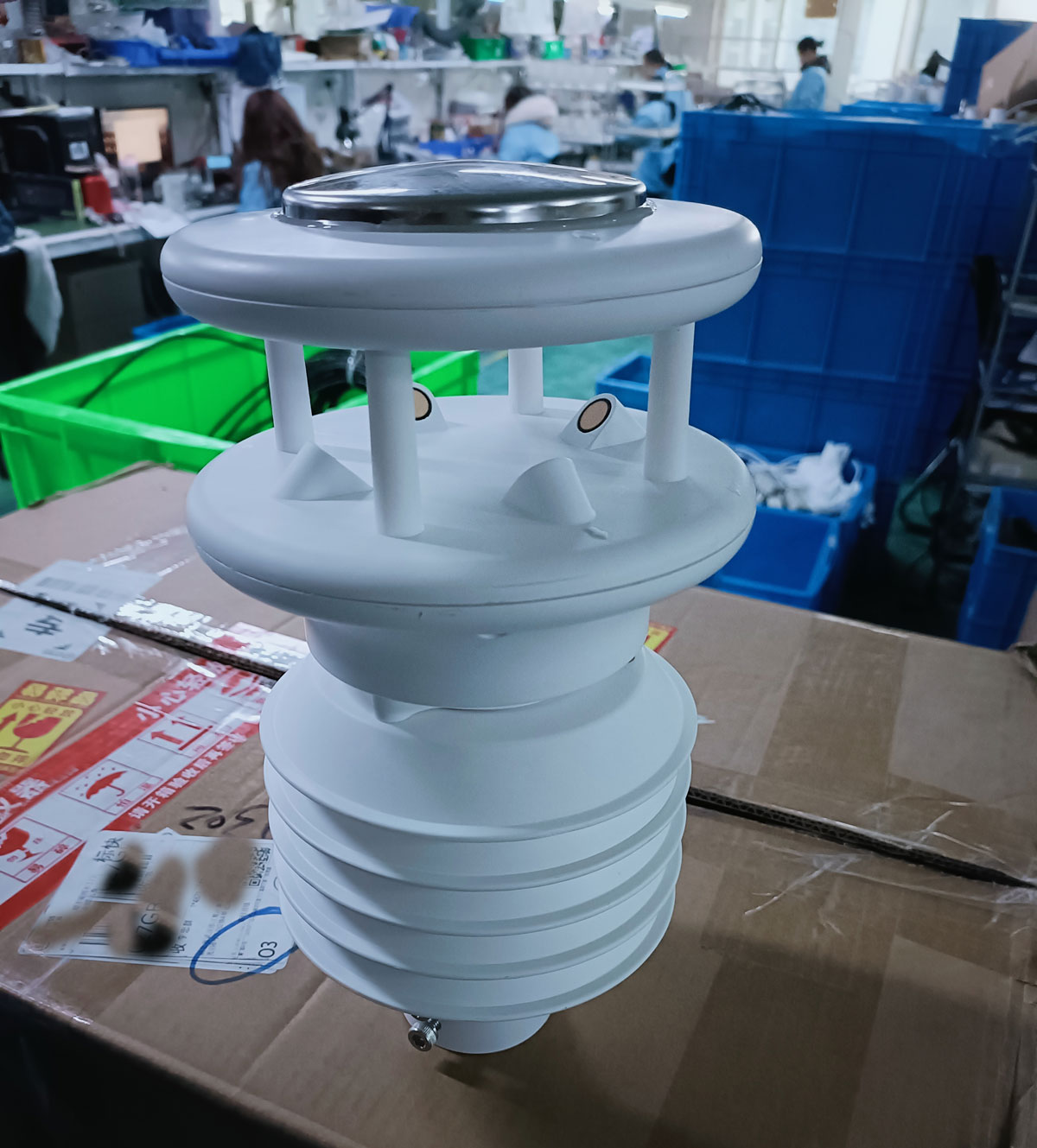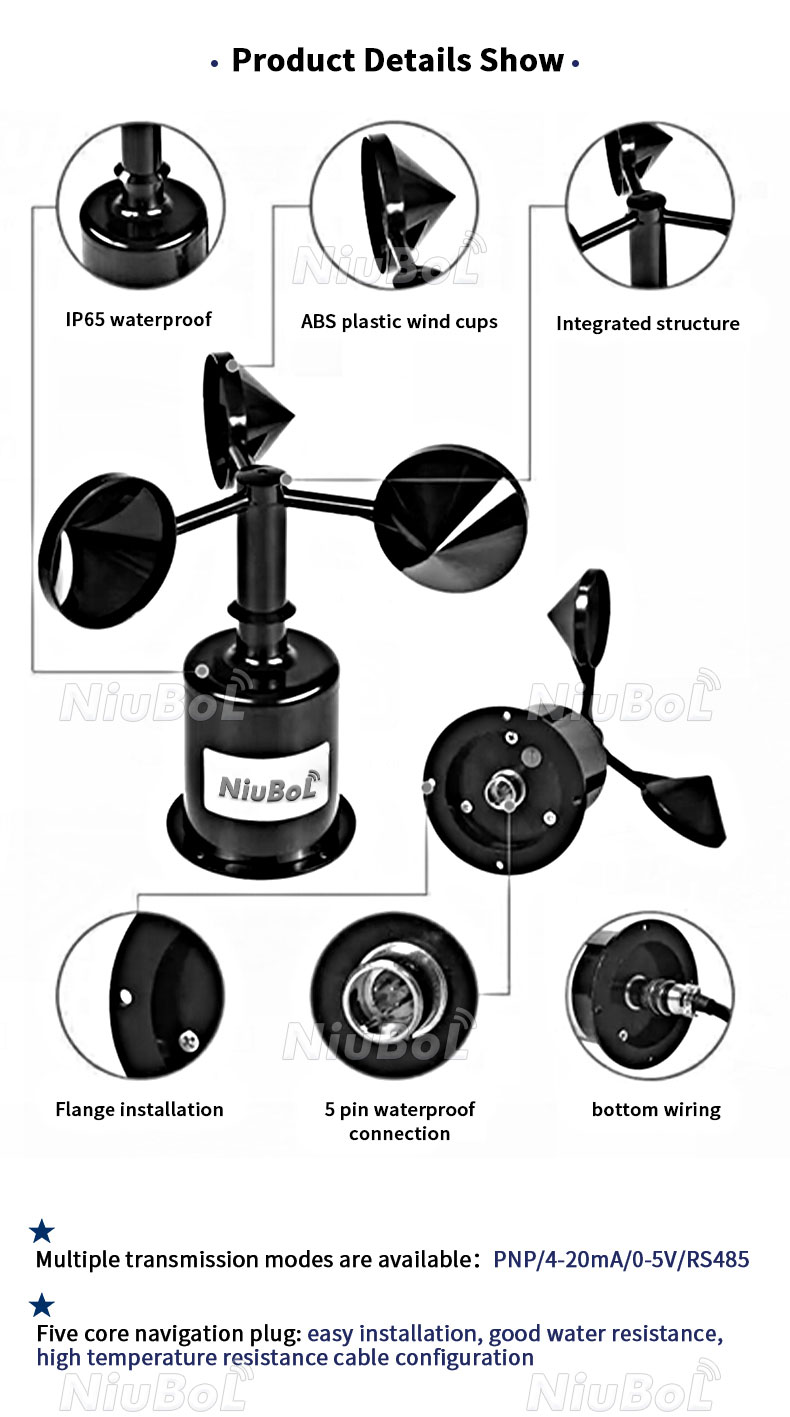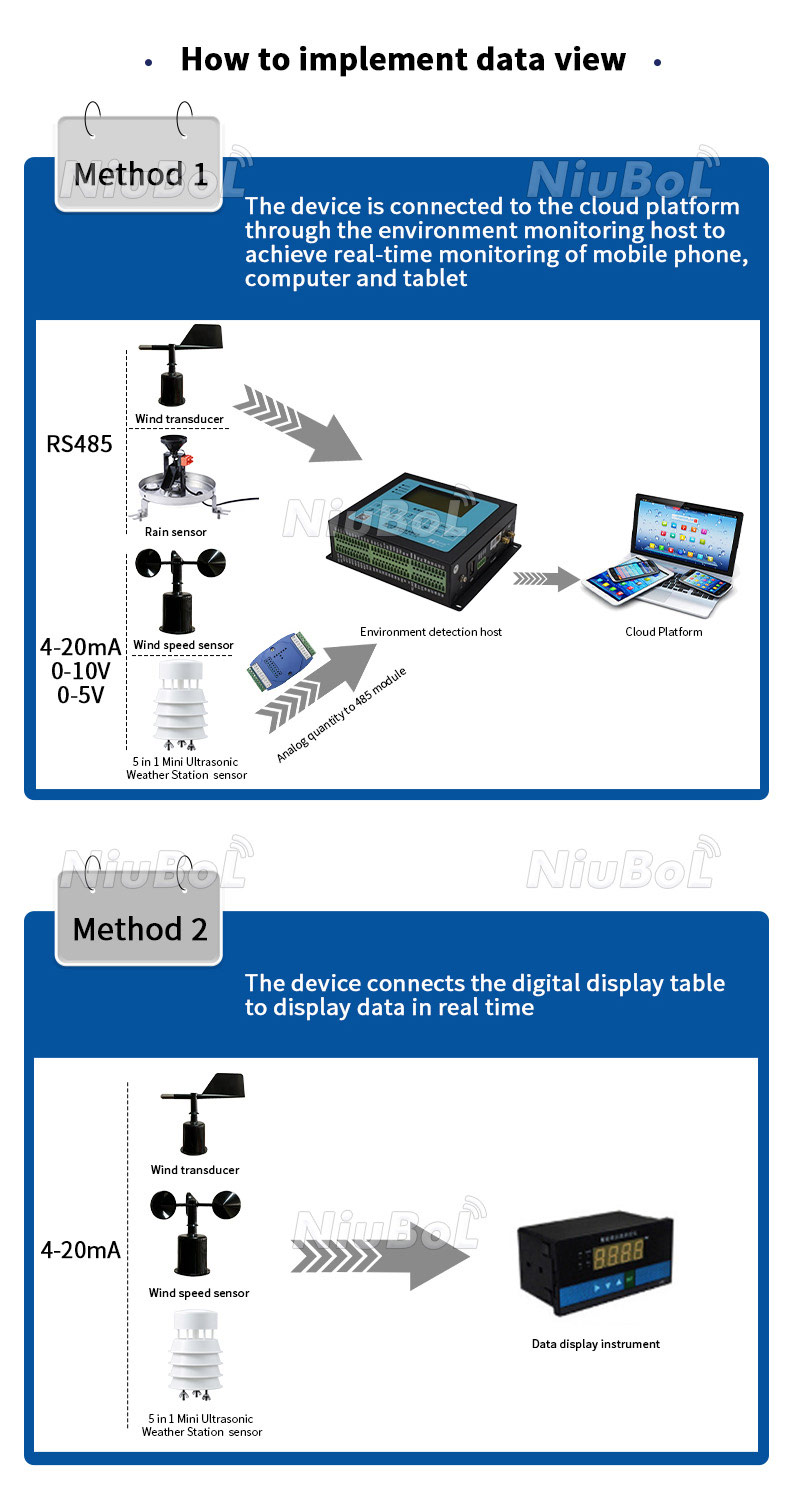

— Blogs —
—Products—
 Consumer hotline +8618073152920
Consumer hotline +8618073152920 WhatsApp:+8615367865107
Address:Room 102, District D, Houhu Industrial Park, Yuelu District, Changsha City, Hunan Province, China
Product knowledge
Time:2025-10-14 14:50:46 Popularity:402
Precise Wind Data: Wind Speed (Wind Speed) and Wind Direction (Wind Direction) in Agricultural Applications and Decision Differences
Did You Know? Ignoring wind direction, even if the wind speed is acceptable, could lead to pesticide drift contaminating adjacent organic fields, resulting in double losses in economics and law. Precise wind data can make your farming decisions safer and more efficient.
In precision agriculture and environmental risk management, wind monitoring is a decisive factor. Wind movement is defined by two key and independent parameters: wind speed (Wind Speed) and wind direction (Wind Direction).
Understanding the essential differences between these two parameters and their unique roles in farming decisions is crucial. Wind speed is a scalar that only describes the speed (force) of the wind; wind direction is a vector that describes the direction from which the wind is coming (trajectory). Imagine: wind speed is like a car's speed, wind direction is like the driving direction—neither can be missing. Only by combining both can a complete vector analysis of air flow be performed, enabling scientific and safe farming decisions. Wind's vector representation is a velocity vector (magnitude = wind speed, direction = wind direction), often used in GIS map simulations for pollutant paths.
Definition: Wind speed is the distance air moves per unit time, typically measured in m/s (meters per second), km/h (kilometers per hour), or knots.
Agricultural Decision Applications: Wind speed directly relates to operational safety and crop physiological stress. Key scenarios include:
- Pesticide Spraying Safety Thresholds: Pesticide spraying operations have strict wind speed upper limit thresholds, usually between 1-4 m/s (about 3-15 km/h), depending on the pesticide label. The upper limit is generally not exceeding 4.5 m/s (10 mph) to avoid droplet drift. High wind speeds cause droplets to be blown away and evaporate too quickly, leading to pesticide contamination of adjacent crops and the environment, and reducing control effectiveness. Wind speed data is the key basis for deciding whether to proceed with operations.
- Crop Transpiration Rate: Increased wind speed removes water vapor from crop leaves, accelerating transpiration and causing rapid moisture loss in crops. Real-time wind speed data is an indispensable input parameter for precision irrigation systems to calculate crop evapotranspiration (ET), helping dynamically adjust water replenishment.
- Mechanical Damage Risk: Strong winds can cause fruit drop, branch breakage, and even crop lodging. Wind speed data serves as the basis for warning of such mechanical risks, guiding farmers to reinforce or support crops in advance.
Definition: Wind direction is the direction from which the wind is blowing, typically measured in azimuth angles (0° representing due north) or 16-point compass directions (e.g., northeast wind, southwest wind).
Agricultural Decision Applications: Wind direction primarily relates to the direction of risk diffusion and pest migration trajectories. Key scenarios include:
- Pollution Diffusion and Risk Avoidance: During operations such as fertilizer or pesticide spraying or straw burning, wind direction data is key to determining safe distances and isolation zones. It guides farms to steer pollution sources away from sensitive areas (e.g., water sources, organic farms, residential areas).
- Pest Migration Prediction: Many agricultural pests (e.g., locusts, aphids, rice planthoppers) migrate long distances with air currents. Combined with pest monitoring equipment and upper-air wind direction data, meteorological stations can accurately predict pest invasion paths and timing, enabling ultra-early warnings and deployment.
- Greenhouse Ventilation Strategy: In greenhouses, wind direction guides the opening strategies for vents and exhaust fans to ensure effective air flow, remove moisture, and prevent disease occurrence.

| Parameter | Type | Key Impact | Decision Example |
| Wind Speed | Scalar | Intensity (Speed) | Spraying Thresholds, ET Calculation for Irrigation |
| Wind Direction | Vector | Direction (From) | Pollutant Diffusion Path, Pest Invasion Prediction |
A typical vegetable farm located near an urban area grows multiple high-value crops. They rely on high-precision ultrasonic anemometers for daily decisions.
- Step 1: Data Analysis: The anemometer displays an average wind speed of 2.5 m/s in real-time (below the safety threshold, allowing operations), but the wind direction is southeast by south (160°).
- Step 2: Risk Positioning: The system map shows a residential drinking water source 300 meters northwest of the farm, and an organic vegetable certified area 150 meters southeast by south.
- Step 3: Decision Adjustment: The farm manager immediately pauses spraying in Area A based on the wind direction data until the wind shifts to northwest or the wind speed drops below 0.5 m/s.
- Potential Impact: Without precise wind direction data, proceeding with spraying just because the wind speed is acceptable could lead to cross-contamination in the organic certified area, posing huge economic and legal risks.

| Risk Factor | Current Data | Decision |
| Wind Speed | 2.5 m/s (Safe) | Allow Operations |
| Wind Direction | Southeast by South (160°) | Pause, Avoid Organic Area |
| Potential Impact | Contaminate Organic Area | Proceed After Northwest Wind or Wind Speed <0.5 m/s |
NiuBoL understands the decision differences between wind speed and direction. Our ultrasonic anemometers output extremely high-precision real-time wind speed and 360° continuous wind direction data through digital signal processing.

A: Wind speed affects transpiration by influencing the boundary layer (air layer) around leaves. At low wind speeds, the boundary layer has high humidity, slowing transpiration; at high wind speeds, the boundary layer is quickly cleared, accelerating the diffusion of water vapor from leaves and sharply increasing the transpiration rate. This requires irrigation systems to dynamically adjust water replenishment based on real-time wind speed data.
A: In calm conditions where wind speed is below 0.5 m/s, wind direction is often unstable. Ultrasonic anemometers can precisely measure very low wind speeds, but in calm states, the system marks wind direction data as "calm/undefined" to avoid misleading angles. In agriculture, calm conditions are often ideal for high-risk spraying operations.
A: Wind speed and direction serve as vector inputs in AI models for simulating pest spread and spore diffusion. For example, AI models combining wind direction, wind speed, and leaf wetness can calculate the probability and time required for spores to spread from Plot A to Plot B, enabling spatiotemporal precise warnings based on the wind environment.
A: Prioritize ultrasonic types for high accuracy and no moving parts, suitable for real-time farm monitoring.
NBL-W-21GUWS-Ultrasonic-Wind-speed-and-direction-Sensor.pdf
Related recommendations
Sensors & Weather Stations Catalog
Agriculture Sensors and Weather Stations Catalog-NiuBoL.pdf
Weather Stations Catalog-NiuBoL.pdf
Related products
 Combined air temperature and relative humidity sensor
Combined air temperature and relative humidity sensor Soil Moisture Temperature sensor for irrigation
Soil Moisture Temperature sensor for irrigation Soil pH sensor RS485 soil Testing instrument soil ph meter for agriculture
Soil pH sensor RS485 soil Testing instrument soil ph meter for agriculture Wind Speed sensor Output Modbus/RS485/Analog/0-5V/4-20mA
Wind Speed sensor Output Modbus/RS485/Analog/0-5V/4-20mA Tipping bucket rain gauge for weather monitoring auto rainfall sensor RS485/Outdoor/stainless steel
Tipping bucket rain gauge for weather monitoring auto rainfall sensor RS485/Outdoor/stainless steel Pyranometer Solar Radiation Sensor 4-20mA/RS485
Pyranometer Solar Radiation Sensor 4-20mA/RS485
Screenshot, WhatsApp to identify the QR code
WhatsApp number:+8615367865107
(Click on WhatsApp to copy and add friends)
